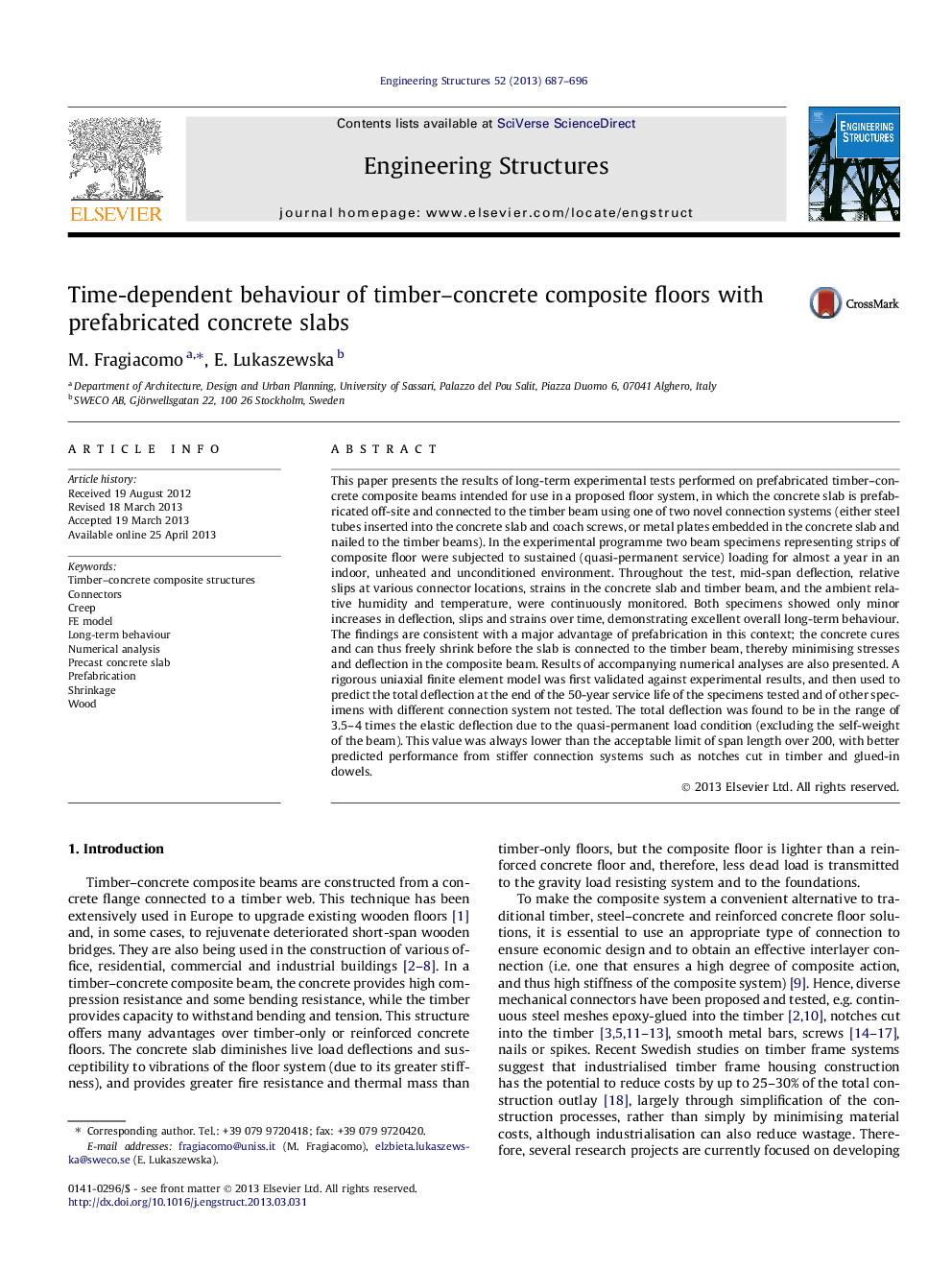| کد مقاله | کد نشریه | سال انتشار | مقاله انگلیسی | نسخه تمام متن |
|---|---|---|---|---|
| 266986 | 504388 | 2013 | 10 صفحه PDF | دانلود رایگان |

• Creep tests were carried out on timber composite beams with prefabricated concrete slabs.
• An increase in elastic deflection of 48% and 77% was monitored after 1 year in the specimens.
• A FE model for time-dependent behaviour was validated on the experimental tests.
• The total deflection predicted after 50 years was in the range 3.5–4 times the elastic deflection.
• The total long-term deflection was always less than the acceptable limit of span length/200.
This paper presents the results of long-term experimental tests performed on prefabricated timber–concrete composite beams intended for use in a proposed floor system, in which the concrete slab is prefabricated off-site and connected to the timber beam using one of two novel connection systems (either steel tubes inserted into the concrete slab and coach screws, or metal plates embedded in the concrete slab and nailed to the timber beams). In the experimental programme two beam specimens representing strips of composite floor were subjected to sustained (quasi-permanent service) loading for almost a year in an indoor, unheated and unconditioned environment. Throughout the test, mid-span deflection, relative slips at various connector locations, strains in the concrete slab and timber beam, and the ambient relative humidity and temperature, were continuously monitored. Both specimens showed only minor increases in deflection, slips and strains over time, demonstrating excellent overall long-term behaviour. The findings are consistent with a major advantage of prefabrication in this context; the concrete cures and can thus freely shrink before the slab is connected to the timber beam, thereby minimising stresses and deflection in the composite beam. Results of accompanying numerical analyses are also presented. A rigorous uniaxial finite element model was first validated against experimental results, and then used to predict the total deflection at the end of the 50-year service life of the specimens tested and of other specimens with different connection system not tested. The total deflection was found to be in the range of 3.5–4 times the elastic deflection due to the quasi-permanent load condition (excluding the self-weight of the beam). This value was always lower than the acceptable limit of span length over 200, with better predicted performance from stiffer connection systems such as notches cut in timber and glued-in dowels.
Journal: Engineering Structures - Volume 52, July 2013, Pages 687–696